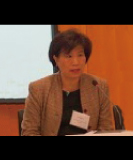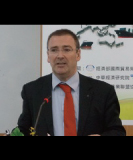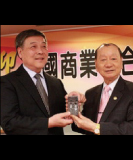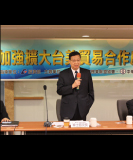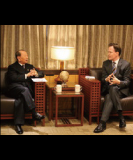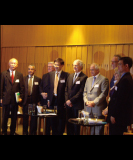You are browsing > Service in Taiwan > Development
Analysis: APEC’s Merchandise Trade Moderates Yet Services Trade ImprovesAPEC
Trade Data Tells APEC’s Story
Trade – once a key driver of growth for the Pacific Rim region – is slowing, and its moderation is affecting the economy, says the newest APEC Regional Trends Analysis, or ARTA.
In 2018, APEC saw uneven growth across the region even as overall growth improved to 4.1 per cent, compared to 4.0 per cent in 2017.
The deceleration of GDP growth began in the second half of 2017, just as more trade restrictive measures arrived, culminating in the imposition of tariffs and counter measures. The bulk of these measures involved initiation of anti-dumping and countervailing investigations.
Today, trade restrictive measures account for nearly 60 per cent of all trade and trade-related measures.
Trade restrictions lead to higher production costs and dampen further trade.
In volume and value, merchandise trade growth – of exports and imports – is moderating. In 2018, APEC exports fell to below half of the global total, from a little above 50 per cent in previous years. The rest of the world is also outpacing APEC in terms of the growth in value of merchandise exports, the ARTA reports.
Services trade is improving, with services exports expanding by 7 per cent in 2018. Yet services trade growth outside of APEC fared even better.
Why We Care
APEC’s economic success story was built on trade. APEC trade amounted to USD 3.1 trillion in 1989. Nearly thirty years later and riding an average growth rate of 7.1 per cent per year – often higher than the pace of GDP growth – the value of APEC trade surpassed USD 24 trillion.
Economic growth fueled by trade helped to lift millions out of poverty.
As the region’s economy nearly tripled in thirty years to USD 66.2 trillion in 2018, average incomes rose and poverty levels fell.
Today, the region has one billion fewer people in poverty than thirty years ago. The middle class is growing. In 2015, middle class and more affluent families account for more than 60 per cent of the population.
At the same time, the benefits of trade and economic growth have not been shared equitably. Income gaps are widening and inequality is rising. Both contribute to a decline in the social consensus for trade and globalisation.
How to Turn the Tide
Trade-related tensions – from Brexit to frictions among APEC members – account for much of the downside risks for the economy. If left to fester, continued uncertainty can further undermine global trade, investment, output, and ultimately consumer confidence.
“For decades, APEC paved the way for closer economic cooperation with a holistic approach based on voluntary participation and common goals. This confidence in a shared and collaborative future fostered many ideas and initiatives – leading to greater growth,” said Denis Hew, Director of the APEC Policy Support Unit, which prepared the report.
“Enormous challenges lie ahead for the region - rising inequality, vulnerability to climate change, and digital disruptions. APEC will need to strengthen the spirit of 1989 ‒ cooperative, holistic and innovative ‒ if it is to step up to the challenges of the next 30 years,” Hew concluded in a presentation to the Institute for Southeast Asian Studies (ISEAS).
For more analysis of the APEC region’s economy, please visit the report page and the media release here.

